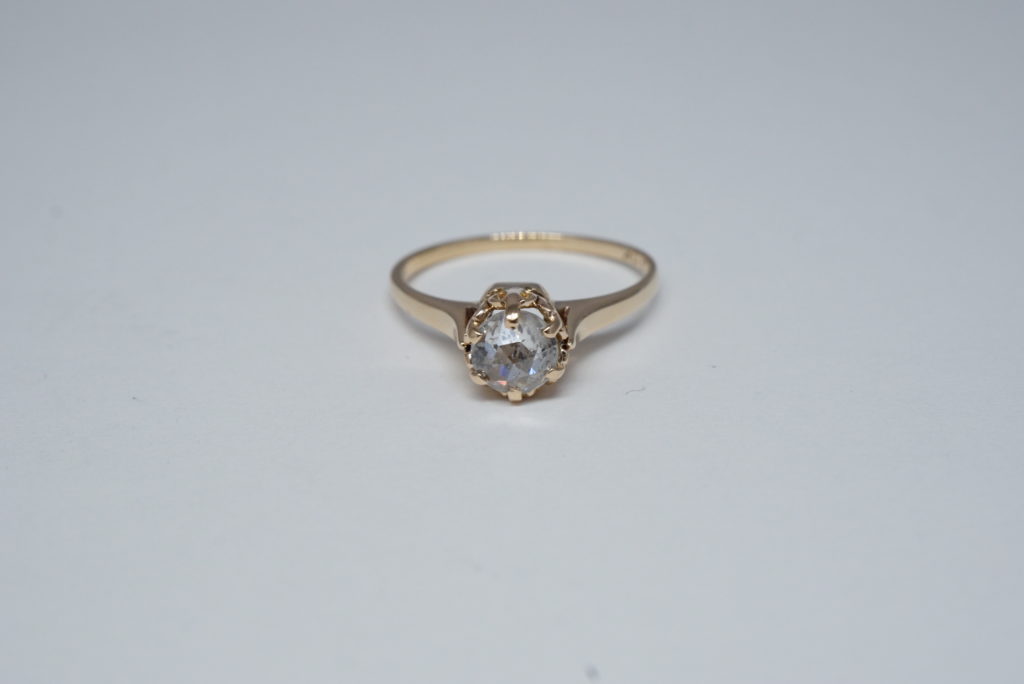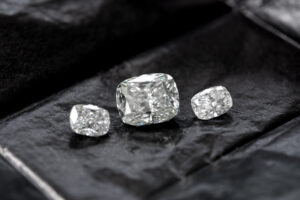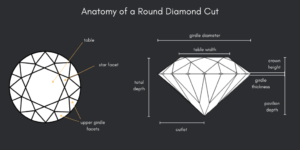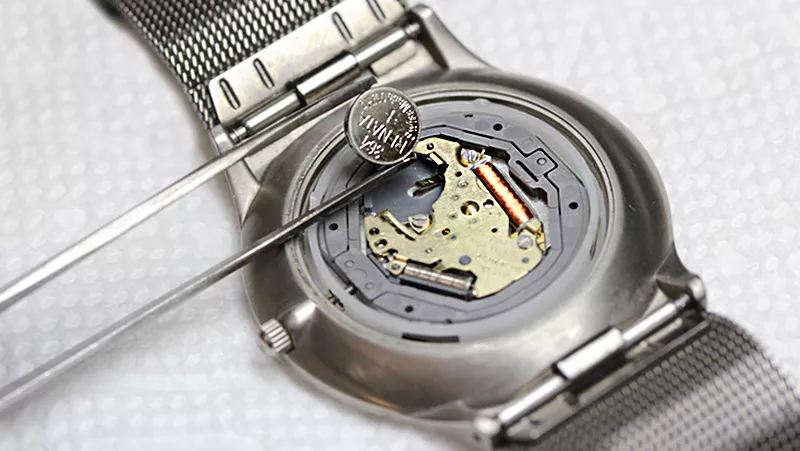The Four Cs of Diamond Quality: Cut, Clarity, Color, and Carat
Written by Anna Currell
September 23, 2022

Evaluating diamond quality may sound like a complicated endeavor, but gemologists have been using the same scientific process for years. Typically, they use four conveniently alliterative factors to determine the quality of every individual diamond: cut, clarity, color, and carat (try saying that five times fast). The four Cs were developed in the 1940s by Robert M. Shipley, the founder of the Gemological Institute of America. He wanted an easy way for his students to remember what to look for when evaluating diamond quality, and the system remains in use around the world today.
Why Would You Need to Know About Diamond Quality?
There are many instances where knowing about diamond quality is important. Maybe you’ve inherited a diamond necklace and instead of wearing it, you’d rather sell it for cash; knowing more about the quality of your diamond will help you to determine its resale value. Or maybe you’re newly engaged and want to insure your ring; understanding diamond quality will dictate how much your diamond is worth and how much your insurance will cost. Getting a professional appraisal by a trained expert is the best way to definitively determine diamond quality.
Buying a Diamond for the First Time?
Are you interested in purchasing your first diamond ring? If so, congratulations! This guide can help you understand every element of what to look for when searching for the perfect stone. In the shopping process, you'll likely hear a lot of the Four C words; this is helpful lingo to determine the best type of diamond. Learn about these properties of a diamond and you'll feel more confident in your search.

What Are the Four Cs?
A gemologist will take each of the four Cs into consideration when determining the overall quality of a diamond. Here’s a quick overview of the specific details each term is referencing:
- Cut: the proportions, symmetry, and sparkle of a diamond
- Clarity: assessment of inclusions or blemishes on a diamond
- Color: the hues present in a diamond
- Carat: the weight of the diamond
Now let’s dive a little deeper into your diamond.
Cut
You may hear people refer to the cut of a diamond to describe the shape of the gem: round, oval, princess, emerald, etc. But in regard to diamond quality, the term “cut” actually refers to the proportions and symmetry of the gem. A diamond’s cut will influence the way that light interacts with it; light refraction impacts properties like brightness and scintillation (how gemologists define sparkle). The cut will impact the diamond's depth, width, and crown height.
The Gemological Institute of America (GIA) has standardized seven components of a diamond cut: brightness, dispersion, scintillation, weight ratio, durability, polish, and symmetry. Those seven factors contribute to the overall determination in equal measure, just like a school rubric. Using those results, gemologists grade the cut of a diamond as either Excellent, Very good, Good, Fair, or Poor.

Clarity
Just like most things in life, even the most impressive diamonds can have flaws. Gemologists and jewelers refer to the flaws in diamonds as “inclusions” and “blemishes.” Inclusions are an internal imperfection of the stone, and a blemish is a surface imperfection. The scale for clarity includes these levels:
- Flawless (F)
- Two categories of Very Very Slightly Included (VVSI₁, VVSI₂)
- Two categories of Very Slightly Included (VSI₁, VSI₂)
- Two categories of Slightly Included (SI₁, SI₂)
- Three categories of Included (I₁, I₂, I₃)
There are multiple categories toward the more included end of the spectrum because the amount, size, and severity of inclusions and blemishes can vary greatly within each level. Depending on the amount of inclusions or blemishes, you might be able to see them with the naked eye. But diamonds closer to the Very Very Slightly Included or Flawless end of the spectrum will probably require a very powerful microscope to spot the imperfections.
Color
All gems have ranges of color, and diamonds range from absolutely colorless to light yellow or even brown. Colorless diamonds will refract light and create a sparkly, rainbow effect, but when we talk about the color of a diamond, we’re referring to the hue or tint of the actual gem itself, not the light that shines around it.
The GIA grades diamond color on a letter scale ranging from D to Z. Letters D-F indicate colorless, G-J indicate near colorless, K-M indicate faint color, N-R indicate very light color, and S-Z indicate light color, which is usually a translucent yellow. While each diamond has its own beauty and everyone has their own preferences, a colorless diamond is considered the most desirable in terms of quality.

A chart detailing the clarity and color grading system
Carat
Not to be confused with karats (which is a unit of measurement to determine how much pure gold is in a metal), this kind of carat measures the weight of a diamond. A single carat unit is about 200 milligrams, and each carat is further divided into 100 points; gemologists and jewelers get incredibly precise about these measurements.
Simply put, the larger the carat, the bigger and heavier the diamond. Larger diamonds are often more expensive, but there are exceptions to this type of price correlation because gemologists also take color, cut, and clarity into account. For example, a 0.25-carat diamond that has an Excellent cut grade, a Flawless clarity grade, and is ranked as a completely colorless D might cost much more than a 2.0-carat diamond with lower grades in other categories.
Now you know the basic lingo of diamond quality testing. When you’re done holding up a magnifying glass to your jewelry box, contact Quick Jewelry Repairs to get an appraisal by a licensed gemologist! We’ll help you determine the precise quality and true value of your diamond jewelry.


